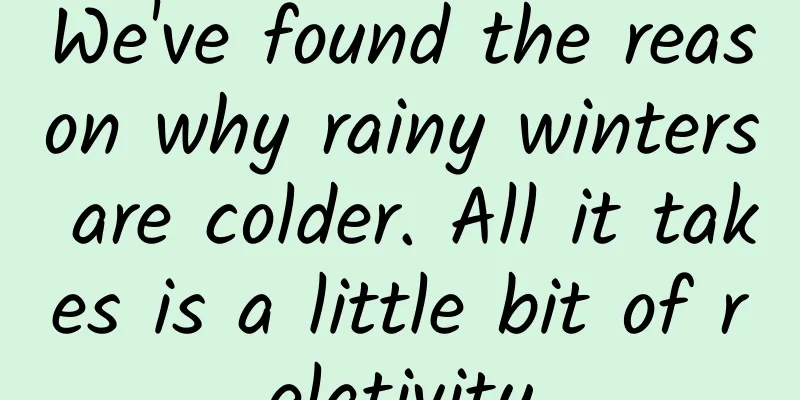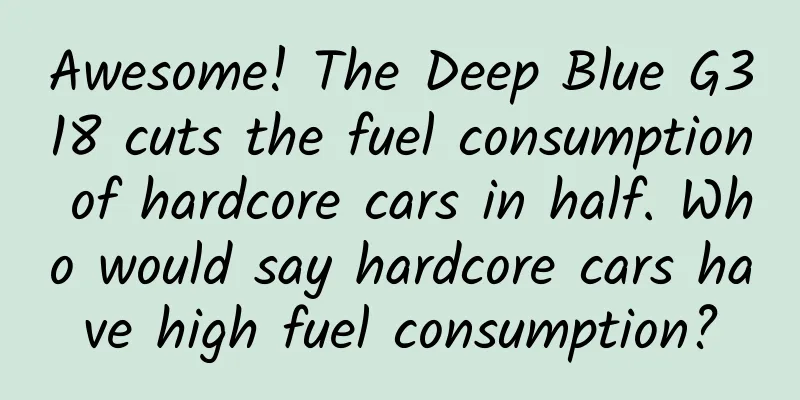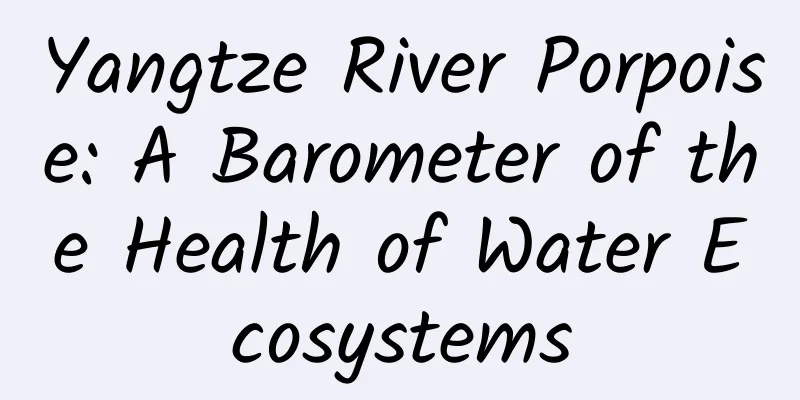We've found the reason why rainy winters are colder. All it takes is a little bit of relativity

|
Author: New Media Center of Institute of Physics, Chinese Academy of Sciences Reviewer: Luo Huiqian, Researcher, Institute of Physics, Chinese Academy of Sciences Students who have been hurt and backstabbed by the magic of cold air on rainy days, assemble! With just a little knowledge of "relativity" (of course, the weather forecast version of relativity), you can use magic to defeat magic. Weather forecasts accompany people in every aspect of life and travel. Speaking of weather forecasts, what do you think of first? Is it the classic weather forecast soundtrack after the CCTV news broadcast, "Fishermen sing in the evening, echoing along the shore of Pengli" (you may want to keep repeating it while watching), or the various temperatures and precipitation or the increasingly better air quality index? Recently, cold air has been hitting us frequently, and I have increased my efforts to check the weather forecast (I wonder if you have any experience of being hit by cold air, welcome to interact in the comment area). One day, I suddenly found a line of information in the weather forecast that seems common but is rarely noticed: the life weather index. Among them, the air humidity aroused my curiosity. Air humidity, or relative humidity, greatly affects people's perceived temperature (such as the hot and humid summer that slipped away quietly). But what exactly is the "relative" in relative humidity? All of a sudden, my curiosity as a physics student was aroused, and based on the self-cultivation of physics students who never bow their heads, a series of questions automatically popped into my mind: 1. What exactly is relative humidity and what is it relative to? 2. What is the relationship between relative humidity and human senses? If you can't answer these two seemingly simple but difficult to explain questions at once, you might as well follow the editor to read on. What is Relative Humidity Relative humidity is defined in the Encyclopedia Britannica as follows [1]: relative humidity, ratio of the actual vapor pressure of water in the air to that in air saturated with water vapor; it is often expressed as a percentage. Translated into Chinese, it means: "Relative humidity refers to the ratio of the actual water vapor pressure in the air to the saturated water vapor pressure at the same temperature, usually expressed as a percentage." Are there a lot of nouns at once? It seems that I can understand each Chinese character, but I don't know what it means when they are put together? It doesn't matter. Next, let's understand step by step what "water vapor pressure" is and what "saturated water vapor pressure" is. In the above, "saturated water vapor pressure" refers to the saturated vapor pressure of water. Let us start with this saturated vapor pressure. "Saturated vapor pressure" refers to the pressure of a certain substance's vapor in phase equilibrium with a solid or liquid under closed conditions and at a certain temperature. Up to this point, the editor not only did not explain clearly what saturated vapor pressure is, but also introduced two new terms, "phase of matter" and "phase equilibrium".... The following is an explanation of these two concepts. Simply put, the phase of a substance refers to the state of a uniform substance with exactly the same physical and chemical properties and composition in the absence of external forces. In fact, it is the state of a substance that we can describe with one word. For example, water vapor and ice are the gas phase and solid phase of water, respectively. The information about the phase of a substance at different temperatures and pressures can be easily read from a phase diagram. For example, in the following diagram, the horizontal axis is temperature and the vertical axis is pressure. Any point on the diagram gives the physical state of water at that temperature and pressure. Take point A as an example. The information the phase diagram gives us is: the horizontal axis is 100 degrees Celsius, the vertical axis is 1 standard atmospheric pressure, and it is at the boundary between the gas phase (corresponding to steam in the diagram) and the liquid phase (corresponding to water in the diagram). From this information, we can easily know that if the temperature of liquid water is raised to 100 degrees Celsius under a standard atmospheric pressure, it will be at the transition point between gas and liquid, that is, the two states coexist. At this time, if the water continues to be heated under the condition of constant pressure, its temperature remains unchanged, and more and more liquid water is transformed into gaseous water vapor. After reading this, students may slap their foreheads and say, "Isn't this the process of boiling water at home?" The editor wants to say that it is like this. In fact, many rich physical phenomena in life correspond to abstract physical theories and physical principles in this way; and many such seemingly simple phase diagrams are also widely used in all aspects of life and continue to contribute to improving people's living standards. Back to the phase diagram of water itself, let's look at point B, which is the triple point of water. At this point, solid, liquid, and gas phases coexist with a certain temperature and pressure. Now let's look at phase equilibrium. Phase equilibrium refers to the thermodynamic equilibrium between two phases of matter. Once you understand the concept of phase, it should not be difficult to understand phase equilibrium. For example, in the above text, when boiling water, the gaseous water is in phase equilibrium with the liquid water (provided that it is not boiled dry). (Pay attention) Finally, we have reached the saturated vapor pressure. Here, I would like to quote my own words from the above text: "Saturated vapor pressure" refers to the pressure of a certain substance in a closed environment and at a certain temperature when the vapor is in equilibrium with a solid or liquid. It is not difficult to conclude that for the water we are discussing in daily life (that is, the scenario described in the weather forecast), the saturated vapor pressure refers to the water vapor pressure when water vapor and liquid water can "coexist peacefully" in the same constant temperature and closed environment and exist stably together. The saturated vapor pressure at different temperatures can be easily read from the phase diagram. For ease of reading, I will post the phase diagram of water again. In the figure, the curve between the two points numbered 1 and 2 is the evaporation line. The evaporation line is the phase equilibrium state where liquid and gas coexist, so the pressure (vertical coordinate) of any point on it is the saturated vapor pressure of water at that temperature (horizontal coordinate). Suppose we start from a certain point on the evaporation line of water (for example, point numbered 3 in the figure), increase the temperature (that is, increase the horizontal coordinate, as shown by the horizontal arrow in the figure), while keeping the selected point on the evaporation line (that is, the upward slanting arrow in the figure) and moving forward to point numbered 4 in the figure, then we can see that the corresponding pressure, that is, the saturated vapor pressure, also rises. The reason why water boils at 100°C is because the saturated vapor pressure of water at the boiling point is exactly the atmospheric pressure. Finally... we have arrived at relative humidity! Let's review the definition of relative humidity: “Relative humidity refers to the ratio of the actual water vapor pressure in the air to the saturated water vapor pressure at the same temperature, usually expressed as a percentage.” Among them, water vapor pressure represents the pressure provided by water vapor (gaseous water molecules) in the air in the current actual outdoor environment. Combined with the saturated vapor pressure we learned above, then, according to the definition, relative humidity, that is, the ratio of water vapor pressure to the saturated vapor pressure at the current temperature, can be easily calculated: This calculation of relative humidity is such a beautiful thing. I believe that by now, you have a clear idea of what relative humidity is, but why is the air sometimes dry and other times moist? This has to do with the water cycle. In fact, there are many forms of water in nature. For example, in the lower atmosphere, the water vapor rich in moist air is gaseous water, and the clouds in the sky are mist or ice crystals formed by condensation nuclei. In the mountains, rivers and lakes on the surface, there is a wide range of liquid water, which is the source of life. In addition, even in the shallow layers below the surface, there is water flowing underground. At different geographical locations and times, the water vapor content in a region is affected not only by the local climatic conditions, such as wind speed and temperature, but also to a large extent by factors in the water cycle, such as evaporation and precipitation. In addition, due to the presence of particulate matter in the environment, water vapor in the real environment is not pure water vapor as described above, but exists in the form of a dilute solution. The existence of this phenomenon will also affect the vapor pressure of water to a certain extent. If you are interested in this part, you are welcome to learn some knowledge in the last part of this article, "Curiosity Area"! After discussing "relativity", let's talk about weather Above, we discussed the most "relative" indicator in the weather forecast: relative humidity. So congratulations to the students who have read this far, you have already learned the "relativity" in weather forecast (dog head). But a weather forecast that cannot guide people's daily lives is not a good relativity. How does relative humidity affect our daily lives? Among them, the most direct and most important impact is the change in perceived temperature caused by the strong combination of relative humidity and air temperature. Now, let the editor lead you to see why people feel particularly hot in the humid summer, while the rainy south is bitterly cold! Relationship between relative humidity and human body sensation and function In the hot summer, people often use the word "sultry" to describe the weather with high air humidity. On such days, people will feel particularly hot when going out. This is because when the relative humidity is high, the evaporation rate of sweat on the human body surface will decrease, making it more difficult for the human body to dissipate heat, resulting in an increase in body temperature. In summer, the relationship between relative humidity and body temperature is as follows: In winter, I believe that students in the south have also experienced the biting damp cold. In fact, the more humid the air is, the colder the human body feels. Before discussing why air humidity affects the thermal insulation effect of clothing, please follow the editor to understand why clothing can keep out the cold. In winter, the clothes we wear, such as down jackets, create an air layer between the human body and the outside world through fluffy down. Since air is a poor conductor of heat, it makes it less likely for the heat generated by the human body to dissipate to the outside world, which is equivalent to locking in the heat, thereby helping people resist the cold. For example, at 20°C, the thermal conductivity of air[5] is about 0.026W/m*K, while the thermal conductivity of water at 20°C reaches 0.6W/m*K, which is about 23 times the former! Thermal conductivity[6] refers to the amount of heat transferred through a 1m*1m cross-sectional area when the temperature difference is 1K through a 1m thick material in the direction of heat conduction, and the unit is watt/meter*degree. In layman's terms, it is the amount of heat that can be transferred through a unit length of a certain material per unit area. It can be seen that the thermal conductivity of water is much higher than that of the air layer at the same temperature. This also explains why the more humid the air, the colder the human body will feel (taking more spell penetration damage). This phenomenon also has a special name: "water chill effect": it means that in winter, when the relative humidity in the air is high, water vapor will squeeze out the warm air layer on people's clothes, thereby reducing the cold-proof function of clothes; at the same time, the water vapor in the humid air will evaporate from the human body and take away heat, making people feel particularly cold. Next, let’s take a look at what kind of environment a person can feel comfortable in. For example, relevant national standards stipulate the standards that indoor air should meet under different circumstances[2], as shown in the following table: So, in order to work happier, what kind of temperature and humidity combination should we maintain? Students may wish to refer to the following values to create a comfortable working environment for themselves! (Summer) 26°C air conditioning, 50% relative humidity, with a cup of iced milk tea (Winter) You at 105°C Curious Areas: Raoult's Law and the Colligative Properties of Dilute Solutions The first part of the text mainly introduces the definitions of relative humidity and saturated vapor pressure, but careful students may find that they are all based on the premise that the system under investigation is ideal and pure. However, there are inevitably many tiny particles in the natural atmosphere, some of which will also dissolve in water as solutes. These trace solutes dissolve in water to form dilute solutions, resulting in a slight deviation between the actual situation and the theory. If you want to describe this dilute solution system that takes into account the actual presence of trace solvents in the atmosphere, you need to introduce Raoult's law and the colligative properties of dilute solutions. At a given temperature, the vapor pressure of a dilute solution solvent is equal to the vapor pressure of the pure solvent multiplied by the mole fraction of the solvent in the solution: in That is, when a solute is present, , so the vapor pressure of the actual solvent (water in the current context) decreases to a certain extent. In addition, the colligative properties of dilute solutions[4] refer to the fact that dilute solutions will exhibit some changes in physicochemical properties that only depend on the amount of solute substance, but have nothing to do with the specific solute. For example, in the case of a dilute solution, The solvent vapor pressure decreases Freezing point depression Boiling point rise Here we mainly use Raoult's law to prove the vapor pressure drop that we are most concerned about. According to Raoult's law, It can be rewritten as Here, the amount of solute is written as the numerator in brackets. Then the vapor pressure change can be defined as Defining Relative Vapor Pressure Change That is, the relative vapor pressure change is a function that is only related to the amount of solute. As long as we know the amount of solute, no matter what kind of substance it is, we can directly calculate the decrease in vapor pressure at this time. It can be seen from this that due to the presence of various soluble substances in the atmosphere in daily life, the vapor pressure of water under current circumstances is actually slightly lower than the theoretical value. References: [1]: relative humidity | Britannica [2]: Indoor Air Quality Standard, GB/T18883-2002 [3]: Raoult's Law and Henry's Law - Baidu Library (baidu.com) [4]: Solution | Colligative properties (chemistryedu.org) [5]: Table of thermal conductivity of common materials - Baidu Library (baidu.com) [6]: Thermal conductivity_Baidu Encyclopedia (baidu.com) This article is produced by Science Popularization China-Starry Sky Project (Creation and Cultivation). Please indicate the source when reprinting. |
<<: The story behind Man Jiang Hong: The enmity between the Song and Jin dynasties
>>: China CDC latest release! The new coronavirus seems to be unable to spread! Latest judgment →
Recommend
Apple suddenly changed its attitude! It completely stopped updating iOS 14 and pushed iOS 15: The response is hard to accept
When iOS 15 was officially released, Apple provid...
What does a unified national market mean? How to build it specifically? Attach details
On April 10, 2022, the Central Committee of the Co...
[Smart Farmers] How to remove the bitterness of cucumbers? Genomics can help
[Smart Farmers] How to remove the bitterness of c...
Why does popping candy "pop"? Childhood questions solved!
For many people, one of the most unforgettable me...
The rainstorm came, the crocodiles ran away, and the local response: Try not to go out...
On September 11, a video circulated online said t...
The hard-working red blood cells are just like you who work hard...
When it comes to red blood cells, readers will de...
Closest to humans! Today we will show you the smartest and most brilliant ape in the animal world~
Ding ding ding ~ Fantastic beasts are coming! Sta...
80txt e-book free download full set
Content preview: [WeChat: jimifeng01] Red|sleeves...
Qiu Yuan's Victoria's Secret Body Shaping Private Tutoring Video 14 Lessons
Qiu Yuan's Victoria's Secret Body Shaping...
Marketing promotion: 13 tips for building your personal IP
Regarding the creation of personal IP, various co...
The Beginner’s Guide to Facebook Video Ads!
Facebook video ads are the most intuitive and eff...
How to retain users? Please give them a reason to stay!
Early WeChat users started using WeChat because o...
Prospering by the sea and moving towards "green": my country's floating wind power opens a new era in the deep blue
Author: Duan Yuechu Cheng Wing Chun Huang Yanhong...
Miluo SEO training: e-commerce website promotion and optimization strategy
For the current lifestyle, online shopping has be...
When it grows up, it eats the brain and turns into a plant. Why does the tunicate hate itself so much?
If we say that "survival" and "rep...









